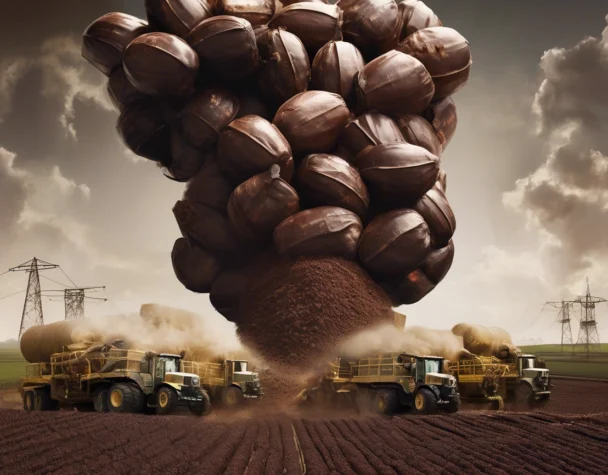
Oil Glut, Cocoa Crisis, and Trade Tensions Shake Commodity Prices
Fri, May 30, 2025Energy and Metals Volatility Spark Investor Recalibrations
The global energy sector is witnessing a dramatic pivot, largely driven by OPEC+ policy shifts and a growing oil surplus. Saudi Arabia and its allies have raised production, aiming to undercut the U.S. shale industry. This move, coupled with rising global inventories—especially in China, where oil stockpiles hit 1.127 billion barrels—has dragged prices down to nearly $61 per barrel. The International Energy Agency (IEA) has also revised its demand forecasts, expecting growth to slow to just 740,000 barrels per day due to weaker economic momentum and a surge in electric vehicle sales (IEA Report).
Meanwhile, geopolitical instability is throwing fuel on the fire. Chevron’s withdrawal from Venezuela following a revoked U.S. license is expected to constrict South American oil exports. On top of that, discussions of new U.S. sanctions on Russia continue to cloud the energy outlook.
The metals market hasn’t fared any better. Europe’s steel sector is feeling the heat from surging imports, particularly from China, threatening domestic producers and raising red flags over industrial self-reliance. In the copper segment, U.S. import surges have effectively crushed tariff-driven premiums, highlighting market overreactions and increased sensitivity to global trade shifts.
Agricultural Disruptions: Cocoa and Rice Face Opposing Fates
In agriculture, one commodity is booming while another faces crisis. India is on track to post record wheat and rice harvests for the fiscal year ending June 2025, with projected wheat output at 117.5 million metric tons and rice at 149 million. These numbers should ease some concerns over global food inflation and stabilize grain-exporting trade relationships (Reuters Agriculture Update).
By contrast, cocoa prices have hit stratospheric highs—surpassing $11,500 per tonne in London—due to multiple years of poor harvests in West Africa. Climate change, crop disease, and fertilizer shortages have severely disrupted the region’s output, sending ripple effects across the chocolate industry. This has triggered what’s being called the “Cocoa Crisis,” with long-term ramifications for global food manufacturers (Wikipedia Cocoa Crisis).
Trade Rulings and Policy Risk Add Another Layer of Uncertainty
On the legal front, a U.S. federal court recently ruled that former President Trump’s use of broad tariffs under emergency powers was unlawful. This could set a precedent for current trade policy disputes and has offered temporary relief to equity markets, although an appeal is anticipated.
Further complicating matters, energy analysts at Wood Mackenzie warn that renewed trade tariffs and protectionist policies could sharply shift oil demand trajectories by several million barrels per day over the next five years, depending on how governments react to shifting economic landscapes.
As May 2025 wraps up, commodity markets remain highly reactive to macroeconomic shifts, environmental constraints, and trade policy decisions. Investors are advised to tread carefully as supply chains, pricing structures, and geopolitical alliances continue to evolve in real time.

